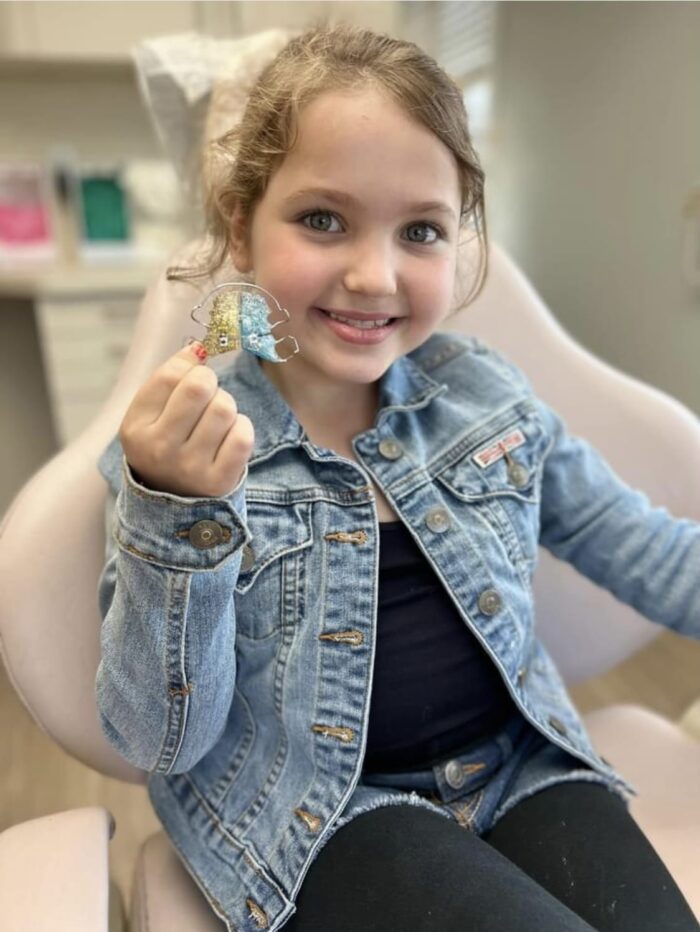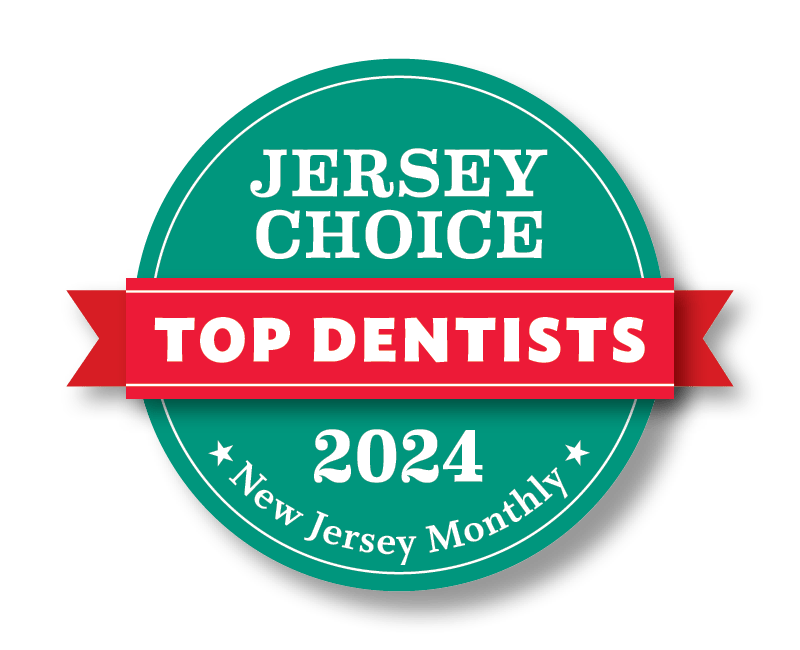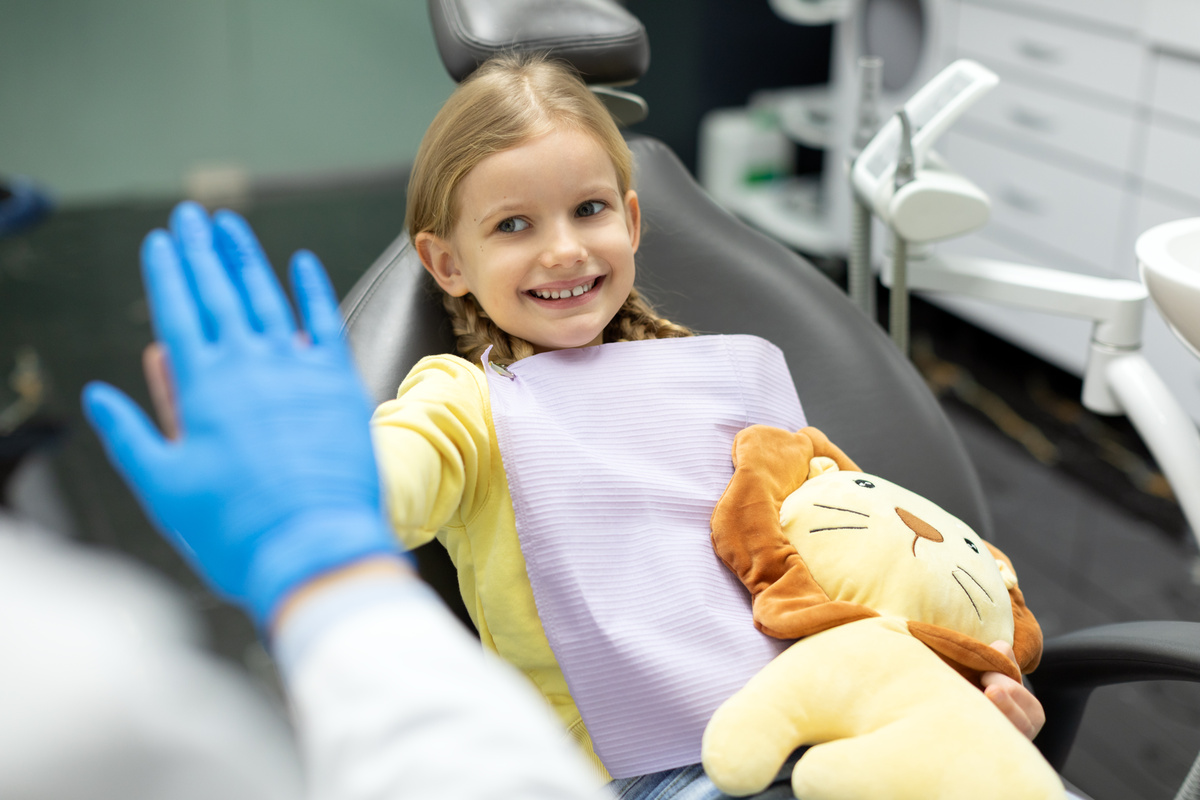
Early Orthodontics
Setting Your Little One Up For A Lifetime Of Healthy Smiles
While adolescence is the most popular time for patients to get braces, in some cases, orthodontic treatment should start sooner—especially during childhood. Early orthodontic evaluation and treatment can address orthodontic issues before the adolescent phase, helping to guide the development of your child’s jaws and teeth for better long-term outcomes. According to the American Association of Orthodontists, you should first take your child to an orthodontist for an evaluation at age 7. At age 7, your child’s permanent teeth have most likely started to come in with some baby teeth remaining. This is the best time for an orthodontist to determine whether your child is a good candidate for early orthodontics, also known as early interceptive treatment or Phase 1 treatment.

The goal of early orthodontics services is to expand your child’s jaw, make room for erupting permanent teeth, prevent the extraction of permanent teeth and make further orthodontic treatment, such as braces or Invisalign, go more smoothly. Early intervention can address problems with the child’s jaws, improving both function and facial appearance. Clemente Orthodontics is a York-based practice committed to providing high-quality service in early orthodontics. Clemente Orthodontics takes a unique and conservative approach to early orthodontics with the Growth Modifying Appliance (GMA). This removable appliance helps expand your child’s upper jaw for a broad arch and natural-looking smile without causing significant discomfort. Early orthodontics can also improve your child’s ability to bite, chew, and speak.
Why Early
Orthodontics?
Some orthodontic patients do not need to get braces, Invisalign® or another appliance until adolescence after all of their permanent teeth have erupted. Others may start to show signs of orthodontic problems early on—such as significant crowding, bite misalignment or jaw pain. In these cases, early orthodontics may be recommended. Acting at the right moment when early signs appear is crucial, as early intervention can help move teeth into their ideal positions, making it easier to straighten teeth later and reducing the need for more invasive treatments during the teen years. Early orthodontics can help:
What is the Growth Modifying Appliance (GMA)?
While each patient is different, the main goal of early orthodontics is to expand the palate to make room for erupting permanent teeth. Many orthodontists achieve this by using a cemented-in device such as a palatal expander. These expanders often require brackets and wires, which are affixed to the teeth and threaded through to correct dental alignment. While palatal expanders can correct jaw misalignment and prepare patients for Phase 2 treatment, we believe that slow growth modification is far more stable, superior and effective. Our signature Growth Modifying Appliance is a removable device that sits on the roof of the mouth. Using gentle pressure over time, the GMA gently expands the palate in all directions. As the palate expands, new bone tissue forms to support the widened arch and ensure stable results. Most patients will wear the GMA for 1 to 3 years, depending on their specific needs. The GMA comes in 30 assorted colors, and can be removed while brushing, flossing and eating. Find out more about our team here.
Transform Your Smile with Expert Orthodontic Care
From traditional braces to Invisalign, we create beautiful, healthy smiles at every age.
• Customized orthodontic treatment plans for all ages
• Invisalign clear aligner therapy for discreet treatment
• Advanced technology for faster, more comfortable results
• Flexible payment plans starting at $99 per month

Signs of Orthodontic Issues in Children
Recognizing the early signs of orthodontic problems can make a significant difference in your child’s oral health journey. According to the American Association of Orthodontists, children as young as age 7 can begin to show indicators that orthodontic treatment may be needed. Parents should be attentive to certain warning signs, such as losing baby teeth earlier or later than expected, difficulty chewing or biting, persistent mouth breathing, or noticeable facial imbalance. These issues can signal underlying orthodontic problems that, if addressed early, can lead to more effective and less invasive treatments.
Regular visits to a pediatric dentist are essential for monitoring your child’s dental development. Dentists and orthodontists can spot subtle changes in the alignment of the upper and lower teeth, as well as the way your child’s bite is developing. If any concerns arise, early intervention with orthodontic treatments like braces or clear aligners can help correct these issues before they become more complex. By staying alert to these signs and seeking timely advice from an orthodontist, you can help your child achieve a confident, healthy smile.
PALATAL EXPANDER VS. GMA
The Growth Modifying Appliance (GMA) has many benefits over fixed, palatal expanders for more gradual, comprehensive and comfortable expansion.
Palatal Expander:
Growth Modifying Appliance (GMA):
Gradual expansion with these appliances allows new bone tissue to form in the palate, supporting the expanded jaw and ensuring long-term stability.
Palatal Expander
Growth Modifying Appliances (GMA)
Two-Phase Orthodontics: What Parents Should Know
Two-phase orthodontics is a specialized approach designed to guide your child’s dental development for a lifetime of healthy smiles. This treatment is divided into two distinct stages. The first phase typically begins between ages 6 and 9, when your child still has some baby teeth and their permanent teeth are starting to emerge. During this time, orthodontic care focuses on correcting bite issues, guiding jaw growth, and addressing problems like crowding or crossbites. By intervening early, orthodontists can help create the ideal environment for permanent teeth to come in properly.
The second phase of treatment usually takes place during adolescence, once most or all of the permanent teeth have erupted. This stage is dedicated to fine-tuning the alignment of the teeth and perfecting the bite, often using braces or clear aligners. By following a two-phase approach, orthodontists can reduce the risk of more serious orthodontic problems later in life and help your child enjoy a beautiful, healthy smile that lasts well into adulthood. If you’re wondering whether your child could benefit from two-phase orthodontics, a consultation with an experienced orthodontist is the best way to get personalized guidance.
What to Expect During Early Orthodontic Treatment
Beginning early orthodontic treatment is a proactive step toward ensuring your child’s lifelong oral health. The process starts with an initial visit to the orthodontist, where your child’s teeth and jaws will be carefully evaluated for any developing issues. If early intervention is recommended, the orthodontist will design a customized treatment plan tailored to your child’s unique needs. This plan may include braces, clear aligners, or other orthodontic appliances, all aimed at addressing problems before they become more serious.
Throughout the course of treatment, you and your child will attend regular appointments so the orthodontist can monitor progress and make any necessary adjustments. These visits are essential for ensuring that the treatment is effective and comfortable. With the right orthodontic care, children can develop a beautiful smile and healthy bite that will benefit them for a lifetime. Early treatment not only addresses current concerns but also helps prevent more complex issues in the future, setting the stage for lasting oral health.
Preparation and Commitment: Supporting Your Child’s Smile Journey
Supporting your child through orthodontic treatment is a team effort that requires preparation, commitment, and the right guidance. Choosing an orthodontist who specializes in pediatric dentistry and understands the unique needs of younger patients is the first step. It’s also important to learn about the different orthodontic treatments available, such as braces and clear aligners, so you can make informed decisions about your child’s care.
Encouraging your child to maintain excellent oral hygiene—brushing and flossing regularly—is crucial during treatment. Attending all scheduled appointments and following the orthodontist’s instructions for caring for appliances will help ensure the best possible results. On the Upper West Side, families have access to orthodontists who are dedicated to providing the highest level of care for children and teenagers. By working closely with your child’s orthodontist and staying involved throughout the process, you can help your child achieve a healthy, beautiful smile that will enhance their confidence and quality of life for years to come.
Early Orthodontics Available in All Three Locations
At Clemente Orthodontics, we provide specialized early orthodontic treatment at all three of our convenient locations, helping children throughout New City, Woodcliff Lake, and Ridgewood achieve healthy, beautiful smiles from an early age. Our unique approach using the Growth Modifying Appliance (GMA) creates the signature “Clemente Smile” with broad, natural-looking results that our practice is known for throughout the community.
New City Location
Visit our New City office at (845) 638-6646 to schedule your child’s complimentary orthodontic evaluation. Following the American Association of Orthodontists’ recommendation, we evaluate children at age 7 to determine if early intervention would benefit their developing smile.
Woodcliff Lake Location
Our Woodcliff Lake location at (201) 484-0600 offers the same gentle, conservative approach to early orthodontics. Our Growth Modifying Appliance provides comfortable, gradual expansion without the discomfort of traditional palatal expanders.
Ridgewood Location
Contact our Ridgewood practice at (201) 447-2888 to learn more about Phase 1 treatment options. With 30 color options for the GMA and our removable design, we make early orthodontic treatment a positive experience for children throughout Bergen County.
Frequently Asked Questions About Early Orthodontics
At Clemente Orthodontics, we believe in the importance of early orthodontic evaluation and intervention when necessary. Our early orthodontics approach focuses on addressing developmental issues before they become more complex. Here are answers to common questions parents have about early orthodontic treatment.
When should my child first see an orthodontist?
The American Association of Orthodontists recommends children have their first orthodontic evaluation by age 7. At this stage, most children have a mix of baby teeth and permanent teeth, allowing our orthodontists to identify potential issues with jaw growth and emerging teeth. Early evaluation doesn’t always mean immediate treatment—sometimes monitoring is the appropriate approach. However, this initial assessment allows our orthodontists to determine the optimal timing for treatment if needed and may prevent more extensive treatment later.
What problems can early orthodontic treatment address?
Early orthodontic intervention can address several developmental issues, including:
- Guiding proper jaw growth to address underbites, overbites, or crossbites
- Creating space for crowded teeth to emerge properly
- Reducing the risk of trauma to protruding front teeth
- Preserving space for unerupted teeth when baby teeth are lost prematurely
- Reducing or eliminating harmful oral habits like thumb sucking
- Improving facial symmetry by influencing jaw growth
- Addressing airway concerns that may affect breathing and sleep quality
Early treatment takes advantage of a child’s natural growth to guide proper development, often making treatment more efficient than waiting until all permanent teeth have erupted.
What is the difference between Phase 1 and Phase 2 orthodontic treatment?
Early orthodontic treatment often follows a two-phase approach:
Phase 1 (Early Interceptive Treatment):
- Typically occurs between ages 7-10
- Focuses on jaw development and creating space for permanent teeth
- May involve palatal expanders, partial braces, or special appliances
- Usually lasts 12-18 months
- Followed by a rest period while permanent teeth emerge
Phase 2 (Comprehensive Treatment):
- Usually begins after most or all permanent teeth have erupted (typically ages 11-13)
- Often involves full braces or Invisalign®
- Focuses on final tooth alignment and bite correction
- Generally lasts 18-24 months
- Concludes with retainers to maintain results
Not all children need both phases. During your child’s complimentary consultation, our orthodontists will explain whether a one or two-phase approach is recommended for your child’s specific needs.
How can I tell if my child might need early orthodontic treatment?
Several signs may indicate your child could benefit from early orthodontic evaluation:
- Early or late loss of baby teeth
- Difficulty chewing or biting
- Mouth breathing
- Thumb sucking beyond age 5
- Speech difficulties
- Teeth that don’t come together properly when the mouth is closed
- Jaws that shift or make sounds
- Crowded front teeth
- Protruding teeth
- Asymmetrical facial development
If you notice any of these signs, scheduling an evaluation with our orthodontists would be beneficial. Early detection can lead to simpler, more effective treatment.
Is early orthodontic treatment necessary for all children?
No, early orthodontic treatment isn’t necessary for all children. Many children with minor alignment issues can wait until most or all permanent teeth have erupted before beginning treatment. Our orthodontists carefully evaluate each child to determine whether early intervention would provide significant benefits. We only recommend Phase 1 treatment when there’s a clear advantage to addressing issues early, such as preventing damage to teeth, improving jaw growth, or addressing functional concerns like breathing difficulties.
How long does early orthodontic treatment typically last?
Phase 1 early orthodontic treatment typically lasts 9-18 months, depending on the specific issues being addressed. Following Phase 1, there’s usually a rest period where we monitor growth and development while waiting for the remaining permanent teeth to emerge. If Phase 2 treatment is needed, it generally begins several years later and lasts approximately 18-24 months. During your child’s consultation, our orthodontists will provide a more precise timeline based on their individual needs and growth patterns.
Will early treatment prevent the need for braces later?
Early orthodontic treatment addresses developmental issues and can significantly reduce the complexity of later treatment, but it typically doesn’t eliminate the need for a second phase of treatment entirely. Phase 1 treatment creates a healthier environment for permanent teeth to emerge and establishes a better foundation for the final orthodontic alignment. In some cases, the second phase may be shorter or less involved than it would have been without early intervention. Our goal with early treatment is to achieve results that would be impossible or much more difficult to accomplish once growth is complete.
How do palatal expanders work in early orthodontic treatment?
Palatal expanders are common appliances used in early orthodontic treatment to widen the upper jaw. They work by applying gentle pressure to separate the two halves of the palate at the growth suture, which hasn’t fused yet in young children. As the expander is gradually activated, new bone develops in the widened space, creating room for crowded teeth and improving the relationship between the upper and lower jaws. Expanders can also enhance breathing by widening the nasal passages. This treatment is most effective in children under 12, before the palatal suture fuses, which is why early evaluation is important for children with narrow palates.
Does early orthodontic treatment hurt?
Early orthodontic treatment is designed to be gentle and comfortable for children. Appliances like palatal expanders create mild pressure that may cause temporary discomfort, particularly after adjustments, but this typically subsides within a day or two. Limited braces used in Phase 1 treatment may cause initial soreness that resolves quickly as children adapt. Our orthodontists prioritize patient comfort and use modern techniques and materials that minimize discomfort. We also take time to explain procedures to young patients in age-appropriate ways, helping them feel more at ease with their treatment.
How much does early orthodontic treatment cost?
The cost of early orthodontic treatment varies based on the specific treatment needed and its complexity. During your child’s complimentary consultation, we’ll provide a detailed estimate after evaluating their unique needs. We offer flexible payment options to make treatment affordable, and many insurance plans provide coverage for orthodontic treatment. Our team works with families to maximize insurance benefits and create payment arrangements that fit their budget. We believe financial considerations shouldn’t prevent children from receiving necessary early intervention.
Give Your Child the Gift of a Healthy Smile
Contact Clemente Orthodontics today for your complimentary consultation and discover why we’re the trusted choice for orthodontic care in New Jersey and New York.
📍 Visit Us:
- Ridgewood, NJ: 60 W. Ridgewood Ave, Ridgewood, NJ 07450
- New City, NY: 603 South Route 304, New City, NY 10956
- Woodcliff Lake, NJ: 595 Chestnut Ridge Rd, Woodcliff Lake, NJ 07677


